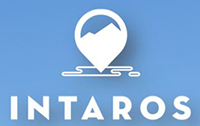The aim of the INTAROS Revised Requirement Report has been to:
• Capitalise on INTAROS achievements
• Take note of recently articulated user need from the EU and international organisations
• Define more concrete requirements for the identified essential variables
• Address gaps in the present observing system
Requirements for in situ observations address resolution in space and time, quality and timeliness. Users of data generally have clearly articulated needs for time resolution, quality and timeliness, while defining the spatial resolution gives rise to serious considerations because:
• There is a need to find a balance between what ideally would be “nice to have” and what is feasible to achieve from a technical, logistic and especially economic point of view
• There is still a debate among scientists on how to address the spatial resolution:
o A gridded format with fixed horizontal and vertical distances between observation points
o Identifying key location with great impact and representativeness
Requirements for atmospheric, ocean and land essential variables has been identified and discussed using the WMO OSCAR and Copernicus Systems – both using a gridded approach – as a baseline for a critical review.
The performed gap analysis points to severe lack of observations in general and in the central Arctic in particular, and lack of sustainability since a majority of observations are based on time-limited campaigns. Additionally, there is a need for investments in developments of observation technology, incl. data communication and data management
The performed requirement and gap analysis results in the following recommendations:
• Ensure work towards a robustly substantiated definition of spatial resolution in an Arctic observing system involving analytic tools such as numerical models (OSE’s and OSSE’s), cost and feasibility studies
• Establish an international coordination and governance structure involving nations, SAON, WMO, IOC, EU Copernicus, , and representatives of Indigenous Peoples and Local Communities to:
o Ensure a forum for dialogue between users of Arctic information, observation program leaders and sensor and application developers to understand evolving needs and capacities
o Secure long-term coordination and continuation of measurements
o Ensure sustained funding to a fit-for-purpose Arctic Observing System
o Enhance and optimize multidisciplinary observations
o Ensure open and free real time data exchange following the FAIR principle
o Increase involvement of Indigenous Peoples and Local Communities in data collection and data integration
o Promote training and teaching as a key value and fundament for capacity building
• Initiate data rescue activities to ingest existing data presently not freely available incl. Russian data
• Pursue innovative cost-effective technological solutions for Arctic observations securing continuous Near Real Time data flow from this harsh environment also during wintertime
